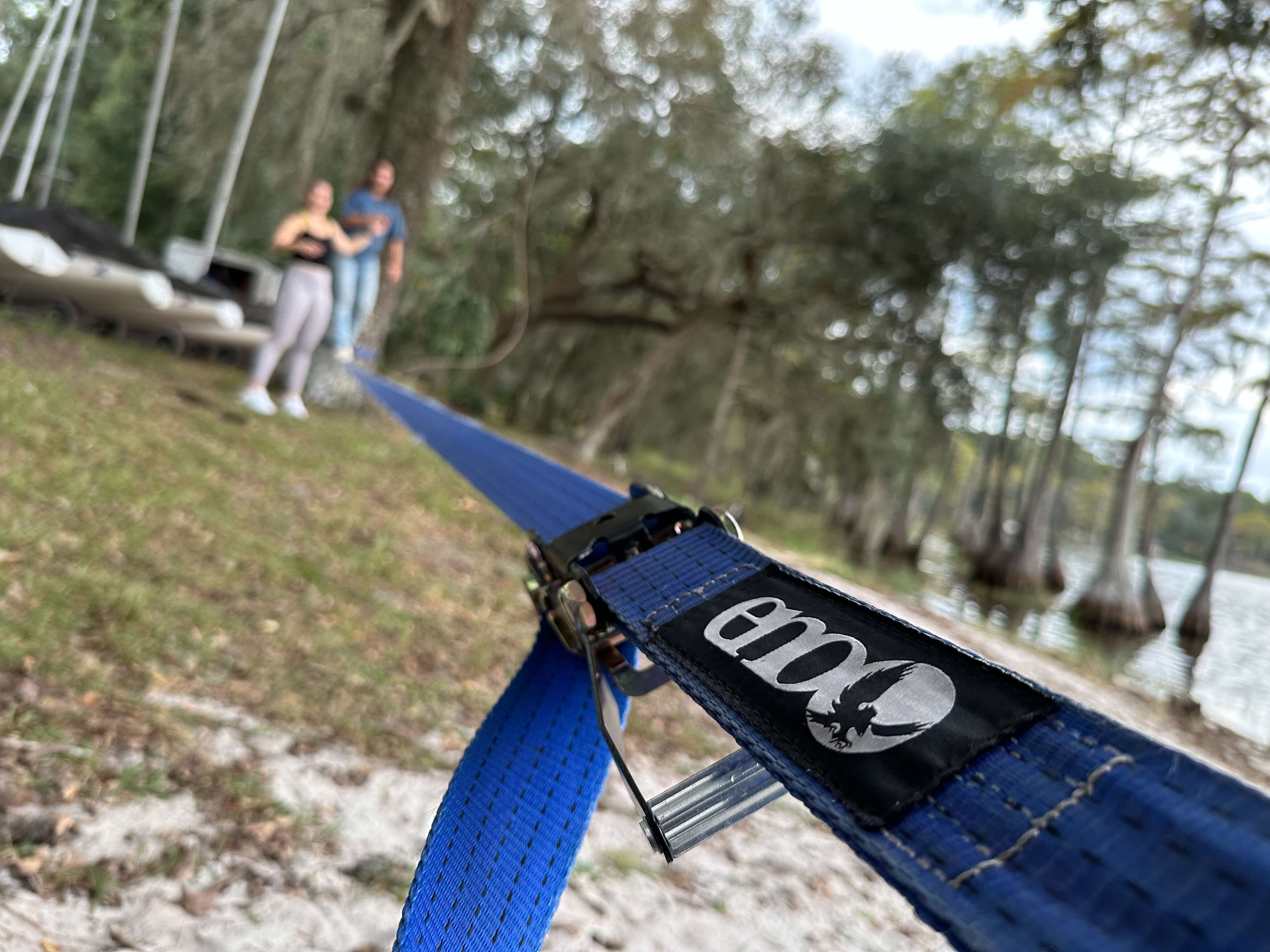Written by Justin Fricke, aka the JustinTheWeekendWarrior
Top 5 Reasons You Should try the ENO SlackWire
Ever since the 2012 Super Bowl Halftime Show, the slackline community has started to gain more recognition. While walking on some sort of wire, rope, etc. has been going on for centuries, slacklining wasn’t actually brought into the limelight until 1979 when two climbers, Adam Grosowsky and Jeff Ellington, who were going to school at The Evergreen State College, started walking around on loose chains and cables they found on campus. They quickly got the idea to string up 1″-wide climbing webbing to walk on. This gave them more dynamic ability to jump and do tricks and walk with more than one person on the line. It was a great in-between class activity that started to attract crowds right away.
Since then, slacklining has progressed, with a lot of help coming from Andy “Sketchy Andy” Lewis. We now have 1″-2″ wide webbing and different types of webbing. For instance: some webbing is great for only 1 person to walk on, another works best for more dynamic aerial tricks, and another works well if you want to have more than 1 person on the line at a time. When you go to a climbing spot, you’re almost destined to see some climbers on a slackline to keep them occupied on their rest day. Likewise, if you’re in a surf town, you’ve got a really good shot at seeing some surf bums on a slackline on a flat day.
Everyone has their reasons, but here are mine:
- It’s a great balance trainer: I don’t care how great your balance is. For the first 30+ minutes, the slackline’s going to win every time. It’s a whole new kind of balance that your body has to get accustomed to. Rather than putting your arms out horizontal, they’re going vertical, and instead of going sideways (like surfing, skateboarding, etc.) you’re walking straight, foot-over-foot. It feels weird at first, but stick with it and after a while it starts getting natural.
- You get a great work out: Believe it or not, you use just about every muscle and tendon in your body (at least from what I can tell). After your first go at slacklining, your quads are going to be screaming, lats aching, arms sagging, and possibly some sore feet if you go barefoot (which is recommended). Over time, these muscles are going to get used to what you’re doing, and the pain will become less and less.
- There’s always something new to learn: In the beginning, you’ll just be happy to balance on the line for 5 seconds. Over time, you’ll start to get better, and you’ll be able to start walking longer distances. Soon you’ll start getting bored of just walking and you’ll start shooting for tricks. This is where it starts to get tough. Some can be easy and quick to learn (at least that was my experience) like The Drop Knee, Vertical Leap, and Lemur Leap. However, there are going to be some tricks you get hung up on. For me it’s The Double Drop Knee. I think I’ve been working this trick for about 6 months now and I can’t tell you how many face plants I’ve done! But it’s still fun.
- One of the most portable sports/hobbies: Most sports require a certain setting. For instance: to surf, you need a surfboard and waves; to rock climb, you need rocks, shoes, and other gear; and the list goes on. For slacklining, you typically only need two trees. And if you don’t have 2 trees, it’s OK.
- Clears your mind: When you’re on a slackline, you have to be completely focused. Clear everything out of your mind, focus on one fixed point, and identify the small adjustments you have to make in order to keep your balance.
Whether you’re new to slacklining or have been doing it for a while, you’re bound to have some fun. If you haven’t done it yet, I highly suggest you give it a try.
Happy slacking!





Share:
3 Backyard Hammock Products Define a New Era in ENO Gear
Hammock Etiquette for Music Festivals